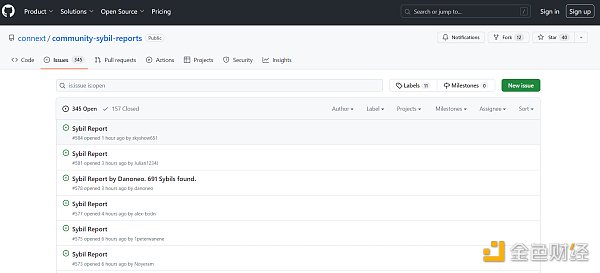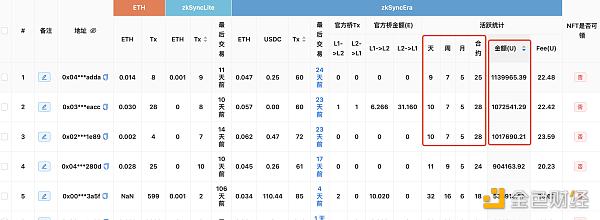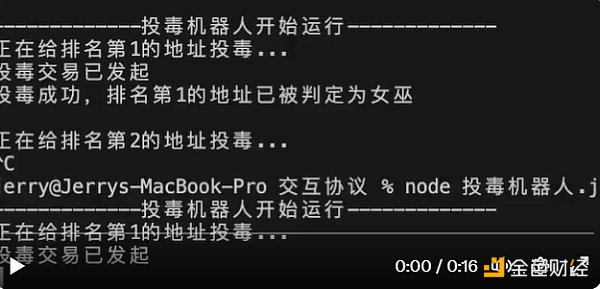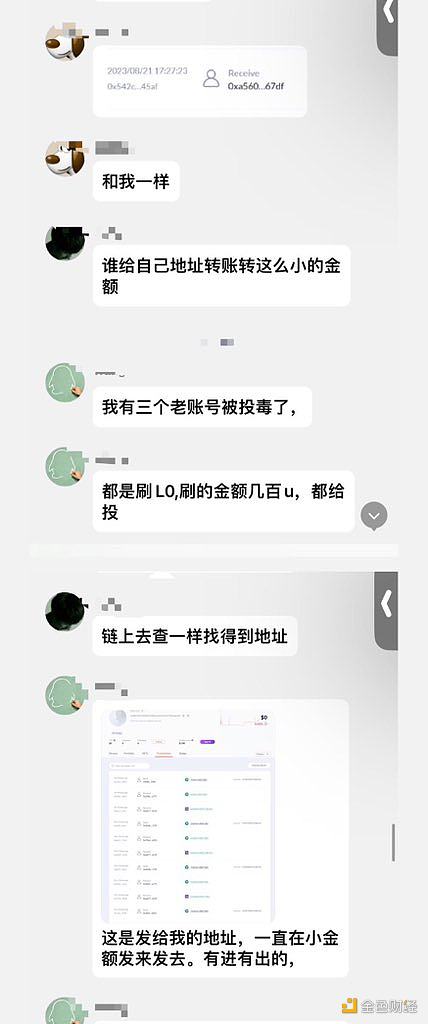Is the golden age of scamming over? Connext’s witch-hunting program goes awry, community poisoning becomes the norm.
Connext's witch-hunting program backfires, community poisoning becomes the norm.Authors: Climber, LianGuai
Last week, the L2 interoperability protocol Connext updated its airdrop rules and announced the Witch Hunter Program, which invited the community to help identify witch addresses and set 25% of NEXT as a reward.
This move had a significant effect, with hunters submitting nearly 600 reports on Github in just one week, involving over 20,000 contract addresses. However, while the impressive results were achieved, it also made the community collectively angry, not only because their hard-earned accounts could be in vain, but also because they were infuriated by the project’s divisive strategy of stirring up community relationships.
In response, some community members threatened to poison the connext witch addresses, claiming that with only 0.2 U, they could take down the top accounts with millions of trading volume. Is it true, as one KOL said, that having all members as witches is equivalent to having no witches at all, and poisoning may be the best way to deal with witches?
- LianGuai Observation | Connext Witch Hunt Program Provokes Public Anger, Poisoning may be the only solution?
- Reviewing the Development History of Web2 Game Engines and Exploring the Future Development Path of Full-Chain Games
- Intent-driven Best practices for Web3+AI?
Origin of Controversy
On August 25th, Connext released an announcement on social media, mobilizing the community to prevent witch attacks. It mentioned that from August 24th to September 1st, if the witch hunters reported successfully, they would receive a 25% reward in NEXT.
And on August 17th, Connext announced the airdrop plan, stating that 10% of the native token NEXT would be available for claiming on September 5th.
The reporting rules mainly include first come, first served, involving at least 10 addresses, and clear reasons for reporting, while the determination of witch addresses is entirely up to Connext’s project team.

However, from the reported information so far, this event can be regarded as the most stringent witch prevention campaign in history. Since the start of the event, as many as 584 reports have been submitted on Github, involving over 20,000 addresses. The witch addresses account for 35% of the connext airdrop addresses, including contract addresses with trading volumes of over $1 million.

In response, professional analysts have summarized several characteristics that are consistent with witch attacks:
- One-to-many and many-to-one transfers
- Funds connection between multiple addresses
- Wallets with low deposits but have operated multiple projects
- NFT trading volume manipulation and mutual transfers
- Similar types of tokens on different chains, similar amounts of funds, and similar transaction fingerprints
Interestingly, Connext specifically pointed out that successful reporters must go through KYC to claim the reward. This means that once the information of these “contributors” is made public, their identities may be attacked due to being considered “betrayers”.
Another event caused by the witch hunting program has also sparked greater dissatisfaction in the community. A user named @Airdrop_Guard posted that a certain user who only interacted with Connext using two accounts was reported, resulting in over 100 other wallet addresses with similar interaction patterns collectively being defined as witches. This means that the accounts that had previously worked hard to accumulate Layerzero or zkSync were all in vain.
Angry Community
Connext is not the first project to use community reporting as a witch hunt. The previous cross-chain protocol Hop Protocol also had such practices. In addition, Connext is the second project, after Zigzag, to officially confirm that consistent interaction behavior is considered witch behavior.
Therefore, the strict definition of witch behavior and the act of inciting community infighting have ignited the anger of the community.

Many netizens have expressed their intention to poison the reported Connext witch addresses, especially the top 10% addresses in transaction volume on zkSync. Some KOLs have also demonstrated short videos of using bots to poison, but it turned out to be just for mockery.
Most of the above are just idle talk, but there are indeed users who claim to have been poisoned. Their addresses continue to receive small transfers, such as 0.0006U. Some analysts pointed out that the poisoning addresses are likely using scripts to send small amounts of U.

It must be said that the witch hunt campaign initiated by Connext has caused many negative impacts beyond the anti-witch incidents. The entire community has become fearful, not only afraid of being defined as witches for their behavior, but also afraid of being poisoned without reason.
However, KOL @hebi555 believes that widespread poisoning is also a countermeasure against witches. He believes that only magic can defeat magic, and having all members become witches equals having no witches. Poisoning may be the best way to solve the witch problem.
Faced with the two situations of Connext project team mobilizing the community to hunt witches and some community members trying to counter by poisoning, some insiders like @jiao_newlife have also proposed relatively positive response methods. They are as follows:
- Perform completely manual operations and do not run batch scripts
- Use multiple exchanges for withdrawals, such as OK, Binance, and Bitget
- Associate one withdrawal address with two consolidation sub-wallets (Bitget and OK)
- Perform withdrawals based on wallets, not projects. Only withdraw from one wallet during a specific time period, i.e., a group of wallets in the same environment
- Can simultaneously withdraw from Layer0 StarkNet ZK, but cannot withdraw from multiple wallets for the same project
- Do not make batch transfers when withdrawing from CEX, but make single transfers to ensure different amounts
- Buy different NFTs
- Publicly disclose 1-2 addresses and let people report them heavily, while hiding the real group of wallet withdrawals
There are always countermeasures against policies. From this, it can be seen that the community of withdrawal enthusiasts is not just helpless or reliant on polluting the environment to win against the project team’s screening behavior. There are other ways to get rich through withdrawals.
Final Remarks
Unlike Hop Protocol, Connext has raised about $21.75 million in funding, with Polygon Fund and Polychain Capital as the lead investors, showing both strength and background. This airdrop has a significant proportion, and it also corrected some transaction issues that were not included in the previous airdrop plan, demonstrating a relatively rigorous official attitude.
However, it is somewhat untimely to establish rules for identifying witch attacks and encouraging community members to report each other, especially in the current poor market environment. Nevertheless, indiscriminate poisoning of contract addresses is unacceptable.
We will continue to update Blocking; if you have any questions or suggestions, please contact us!
Was this article helpful?
93 out of 132 found this helpful
Related articles
- In-depth analysis of Pendle LSDfi integrates RWA DeFi Lego to stack new puzzle blocks
- Exclusive Interview with Connext Adopting a Points Mechanism to Determine the Number of User Airdrops, with Plans to Expand to 20 Chains by the End of the Year
- LianGuai Daily | Grayscale Wins Lawsuit Against the US SEC; Ethereum Foundation Launches Ethereum Execution Layer Specification
- In-depth conversation with Sui, Chief Scientist of Mysten Labs How does Sui solve the problem of network scalability from theory to practice?
- Friend.Tech frenzy subsides daily trading volume drops by 90%, Base network returns to rationality
- Explaining Zeth, the Ethereum Block Validator The First Type 0 zkEVM
- No matter how much emphasis is placed on it (1) 10 steps to ensure the security of encrypted assets




